Boat Engine Zincs and Anodes: Complete Protection Guide
Table of Contents
- Introduction
- Understanding Galvanic Corrosion
- How Sacrificial Anodes Work
- Types of Sacrificial Anodes
- Common Anode Locations on Boats
- Engine-Specific Anode Requirements
- When to Replace Anodes
- Installation Best Practices
- Common Anode Mistakes to Avoid
- Saltwater vs. Freshwater Considerations
- Troubleshooting Corrosion Issues
- Conclusion
Introduction
When it comes to protecting your boat's engine and other underwater metal components, sacrificial anodes—commonly called "zincs"—are your first line of defense against a relentless and invisible enemy: galvanic corrosion. These seemingly simple metal components play a critical role in extending the life of your boat's propulsion system and underwater hardware.
Despite their importance, anodes are often misunderstood, neglected, or improperly maintained by many boat owners. This oversight can lead to accelerated corrosion, expensive repairs, and even catastrophic failures of critical components. Understanding how anodes work, which types to use, and when to replace them is essential knowledge for every boat owner.
In the marine environment, metal components are constantly under attack from electrochemical processes that can eat away at expensive parts like propellers, shafts, rudders, outdrives, and engine cooling systems. Sacrificial anodes are designed to corrode instead of these valuable components, essentially "taking the hit" so your expensive equipment doesn't have to.
This comprehensive guide will explore everything you need to know about boat engine zincs and anodes. We'll explain the science behind galvanic corrosion, discuss the different types of anodes available, identify where they should be installed, and provide practical advice on maintenance and replacement. Whether you operate in saltwater, freshwater, or brackish environments, this guide will help you implement an effective corrosion protection strategy for your boat.
By the end of this article, you'll understand why these seemingly insignificant pieces of metal are among the most important maintenance items on your boat, and you'll have the knowledge to properly select, install, and maintain them for maximum protection.
Understanding Galvanic Corrosion

Before diving into the specifics of sacrificial anodes, it's essential to understand the enemy they're designed to fight: galvanic corrosion. This electrochemical process is particularly aggressive in the marine environment and can quickly damage expensive metal components.
What Is Galvanic Corrosion?
Galvanic corrosion occurs when two dissimilar metals are in electrical contact with each other and immersed in an electrolyte (such as water, especially saltwater). This creates a natural battery-like circuit where one metal becomes the anode (negative) and the other becomes the cathode (positive).
In this electrochemical cell:
- The anode corrodes faster than it would alone
- The cathode corrodes slower than it would alone
- The more electrically dissimilar the metals, the stronger the corrosion effect
- The more conductive the electrolyte (water), the faster the corrosion
Galvanic corrosion occurs when dissimilar metals create a natural battery in water, causing one metal to sacrifice itself to protect the other.
The Galvanic Series
Metals are ranked in what's called the "galvanic series" based on their electrical potential. When two metals from this series are connected in an electrolyte, the metal higher in the series (more active or anodic) will corrode to protect the metal lower in the series (more noble or cathodic).
Here's a simplified galvanic series for common boat metals, from most anodic (will corrode first) to most cathodic (most protected):
- Magnesium (most anodic)
- Zinc
- Aluminum
- Steel
- Iron
- Lead
- Tin
- Nickel
- Brass
- Copper
- Bronze
- Stainless Steel
- Titanium
- Graphite (most cathodic)
This ranking explains why, for example, a stainless steel propeller shaft connected to a bronze propeller will experience accelerated corrosion at the shaft—the stainless steel is more anodic than bronze in this pairing.
Factors That Accelerate Galvanic Corrosion
Several factors can increase the rate of galvanic corrosion on your boat:
Water Conductivity
- Saltwater: Highly conductive, causing rapid galvanic corrosion
- Brackish water: Moderately conductive
- Freshwater: Less conductive, but still enables galvanic corrosion
- Polluted water: Often more conductive due to dissolved minerals and chemicals
Temperature
- Higher water temperatures accelerate corrosion rates
- Tropical environments typically experience faster corrosion
- Seasonal temperature changes can affect corrosion rates
Metal Combinations
- Greater electrical potential difference between metals creates faster corrosion
- Multiple different metals create complex galvanic interactions
- Large cathode-to-anode surface area ratios accelerate corrosion of the anode
Stray Current Corrosion
- DC electrical leakage into the water can dramatically accelerate corrosion
- Often caused by faulty wiring, shore power issues, or nearby boats
- Can cause corrosion rates hundreds of times faster than normal galvanic corrosion
Important Note:
Sacrificial anodes protect against galvanic corrosion but provide limited protection against stray current corrosion. If you're experiencing unusually rapid anode consumption, investigate possible electrical issues on your boat or at your marina.
Understanding these fundamentals of galvanic corrosion helps explain why sacrificial anodes are so important and how they work to protect your boat's valuable components. Next, we'll explore exactly how these anodes function as your boat's corrosion bodyguards.
How Sacrificial Anodes Work
Sacrificial anodes operate on a simple but ingenious principle: they exploit the galvanic series to protect more valuable metals by sacrificing themselves. Let's explore how this protective system works and why it's so effective.
The Principle of Sacrificial Protection
Sacrificial anodes are made from metals that are more anodic (higher in the galvanic series) than the metals they're designed to protect. When properly installed and in good electrical contact with the protected metal, the anode becomes part of a galvanic cell where:
- The sacrificial anode becomes the anode in the galvanic cell
- The boat's metal components become the cathode
- The water serves as the electrolyte
- Electrons flow from the anode to the cathode through the metal connection
- The anode corrodes while the cathode is protected

Sacrificial anodes corrode preferentially, directing the corrosion away from valuable components like propellers and shafts.
The Protection Zone
An important concept to understand is that sacrificial anodes provide protection within a limited zone. The protection extends to metals that are:
- In good electrical contact with the anode (directly connected or through bonding wires)
- Within a reasonable proximity in the water
- Part of the same electrical system
This is why boats typically need multiple anodes placed strategically on different components—a single anode cannot protect the entire boat. The protection zone varies based on water conductivity, anode size, and other factors, but generally extends only a limited distance from the anode.
Measuring Anode Effectiveness
The effectiveness of sacrificial anodes can be measured using a reference electrode and a multimeter to check the electrical potential of protected metals. For optimal protection:
- Steel should maintain a potential of -0.80 to -0.85 volts
- Aluminum should maintain a potential of -0.90 to -1.10 volts
- Bronze/brass should maintain a potential of -0.50 to -0.55 volts
These measurements are taken using a silver/silver chloride reference electrode. If potentials are less negative than these ranges, corrosion protection is inadequate. If potentials are too negative, overprotection can cause problems like paint blistering or hydrogen embrittlement in some metals.
Professional Tip:
While most recreational boaters don't regularly measure electrical potentials, having this done professionally during haul-outs can help verify your corrosion protection system is working properly, especially for larger vessels or those with complex metal components.
Anode Consumption Rate
Several factors affect how quickly anodes are consumed:
Water Conditions
- Saltwater: Fastest consumption due to high conductivity
- Brackish water: Moderate consumption rate
- Freshwater: Slowest consumption (except for magnesium anodes)
Boat Usage
- Active use: Higher water flow increases consumption rate
- Moored/docked: Stagnant water may lead to calcareous deposits that slow consumption
- Seasonal use: Intermittent use patterns affect consumption rhythms
Electrical Factors
- Bonding system quality: Poor connections reduce effectiveness
- Stray currents: Can dramatically accelerate consumption
- Nearby boats: Can influence your boat's electrical field
- Shore power connections: Can introduce galvanic currents if not properly isolated
Now that we understand how sacrificial anodes work to protect your boat, let's explore the different types available and which are best for specific applications and water conditions.
Types of Sacrificial Anodes
Not all sacrificial anodes are created equal. Different metals are used for anodes based on their electrochemical properties and the environment in which they'll be used. Understanding these differences is crucial for selecting the right anode for your specific boating conditions.
Zinc Anodes
Zinc has been the traditional material for sacrificial anodes for decades, which is why all sacrificial anodes are often generically called "zincs" regardless of their actual composition.
Characteristics
- Composition: Primarily zinc with small amounts of alloying elements
- Appearance: Dull gray color
- Driving voltage: Approximately -1.05 volts (vs. silver/silver chloride reference)
- Best for: Saltwater applications
- Lifespan: Good longevity in saltwater environments
Advantages
- Excellent performance in saltwater
- Long history of proven effectiveness
- Widely available and familiar to most marine service providers
- Generally less expensive than other anode types
Limitations
- Poor performance in freshwater (forms passive oxide layer)
- Contains some heavy metals that may be restricted in certain areas
- Less effective in brackish water than aluminum anodes
Zinc anodes come in various shapes and sizes to fit different components of your boat's propulsion system.
Aluminum Anodes
Aluminum anodes have gained popularity in recent years due to their versatility and environmental benefits.
Characteristics
- Composition: Aluminum alloy with zinc, indium, and other elements
- Appearance: Lighter gray or silver color than zinc
- Driving voltage: Approximately -1.10 volts (vs. silver/silver chloride reference)
- Best for: All-purpose use in saltwater, brackish, and freshwater
- Lifespan: Up to 50% longer than zinc in saltwater
Advantages
- Works effectively in all water types
- Higher capacity (more protective capacity per pound than zinc)
- More environmentally friendly (no heavy metals)
- Higher driving voltage provides better protection
- Lighter weight than zinc
Limitations
- Slightly higher initial cost than zinc
- May not be compatible with some older mercury-based outboards
- Can cause overprotection in some applications if not properly sized
Magnesium Anodes
Magnesium anodes are specifically designed for use in freshwater environments.
Characteristics
- Composition: Magnesium alloy
- Appearance: Very light silver color, often with a chalky surface
- Driving voltage: Approximately -1.60 volts (vs. silver/silver chloride reference)
- Best for: Freshwater applications only
- Lifespan: Shortest of all anode types due to high activity
Advantages
- Excellent performance in low-conductivity freshwater
- Highest driving voltage provides protection even in poorly conductive environments
- Environmentally friendly
Limitations
- Corrodes extremely rapidly in saltwater (can disappear in weeks)
- Can cause overprotection leading to paint blistering or hydrogen embrittlement
- Higher cost than zinc or aluminum
- Shorter service life requires more frequent replacement
From left to right: zinc, aluminum, and magnesium anodes. Each has specific applications based on water type.
Choosing the Right Anode Material
Selecting the appropriate anode material depends primarily on where you boat:
| Water Type | Best Anode Material | Alternative |
|---|---|---|
| Saltwater (ocean) | Zinc or Aluminum | Aluminum preferred for longer life |
| Brackish water (estuaries) | Aluminum | Zinc (but less effective) |
| Freshwater (lakes, rivers) | Magnesium | Aluminum (acceptable in most cases) |
| Mixed use (salt and fresh) | Aluminum | Change anodes based on environment |
Universal Solution:
If you boat in multiple water types or aren't sure which anode to choose, aluminum anodes are generally the safest all-around choice. They work effectively in all water types, though not quite as well as zinc in saltwater or magnesium in freshwater.
Now that we understand the different types of anodes available, let's look at where these anodes should be installed on your boat to provide comprehensive protection.
Common Anode Locations on Boats
Proper placement of sacrificial anodes is crucial for effective corrosion protection. Different boat components require specific anode types and locations to ensure complete coverage. Let's explore the common locations where anodes should be installed.
Outboard Engine Anodes
Modern outboard engines typically have several factory-installed anodes in strategic locations:
- Cavitation plate: Flat plate anode on the anti-ventilation plate
- Gearcase: Usually one or more anodes on the lower unit
- Trim tab anode: Combined trim tab/anode on the lower unit
- Internal anodes: Inside the powerhead cooling passages (not visible externally)
- Propeller shaft: Small cylindrical or conical anodes
- Propeller hardware: Anode nuts or washers

Outboard engines have multiple anode locations to protect different components of the lower unit and cooling system.
Sterndrive (I/O) Anodes
Sterndrive units require comprehensive anode protection due to their complex metal components:
- Cavitation plate: Bar or plate anodes
- Transom plate: Anodes on the transom assembly
- Drive housing: Multiple anodes on the underwater housing
- Trim cylinders: Cylindrical anodes on trim rams
- Propeller shaft: Collar anodes
- Gimbal housing: Anodes on the gimbal ring
- Internal anodes: Inside cooling passages

Sterndrive units typically require multiple anodes to protect all vulnerable components.
Inboard Engine and Running Gear Anodes
Inboard-powered boats need anodes on both the engine and the external running gear:
Engine Anodes
- Heat exchanger: Pencil or plug anodes inside heat exchangers
- Oil cooler: Specialized anodes for oil cooling systems
- Transmission cooler: Anodes protecting transmission cooling systems
- Engine block: Block anodes in raw water passages
Running Gear Anodes
- Propeller shaft: Collar or donut anodes
- Propeller: Propeller nut anodes
- Strut: Strap-on or bolt-on strut anodes
- Rudder: Rudder anodes (often on the bottom edge)
- Trim tabs: Anodes on the bottom of trim tabs
- Keel coolers: Specialized anodes for keel cooling systems
Inboard boats require anodes on both the engine's cooling system and the external running gear.
Hull and Bonding System Anodes
Beyond engine and running gear protection, many boats benefit from hull anodes and a comprehensive bonding system:
- Hull anodes: Flush-mounted or bolt-on anodes on the hull bottom
- Transom anodes: Mounted on the transom for additional protection
- Bonding system: Connects all underwater metals to ensure they share the same electrical potential
- Shaft brushes: Maintain electrical continuity between rotating shafts and the bonding system
Bonding System Importance:
A properly designed bonding system connects all underwater metal components to sacrificial anodes, ensuring comprehensive protection. Without bonding, isolated metal components won't benefit from anode protection and may experience accelerated corrosion.
Special Applications
Some boats have additional components requiring specialized anode protection:
- Bow thrusters: Require dedicated anodes on the thruster tunnel or propeller
- Underwater lights: May need nearby anode protection
- Swim platforms: Stainless steel platforms often need dedicated anodes
- Sea strainers: Bronze strainers benefit from internal pencil anodes
- Stabilizer fins: Require specialized anodes for their unique shapes
Now that we understand where anodes should be installed, let's look at the specific anode requirements for different engine types and manufacturers.
Engine-Specific Anode Requirements
Different engine manufacturers design their products with specific anode systems. Understanding these requirements ensures you provide proper protection for your particular engine model.
Outboard Engine Manufacturers
Major outboard manufacturers have unique anode configurations and requirements:
Mercury/Mariner Outboards
- Typical locations: Cavitation plate, gearcase, trim tab, internal powerhead
-
Special considerations:
- Verado models have additional powerhead anodes
- Some models use the trim tab as an anode
- Pro XS models may have different anode configurations
- Recommended material: Mercury specifies aluminum anodes for most applications
Mercury outboards typically have multiple anode locations to protect different components.
Yamaha Outboards
- Typical locations: Gearcase (multiple), cavitation plate, internal anodes
-
Special considerations:
- HPDI models have additional cooling system anodes
- F350 and other large models have unique anode configurations
- Some models use sacrificial trim tabs
- Recommended material: Yamaha generally recommends zinc for saltwater, but aluminum anodes are compatible
Suzuki Outboards
- Typical locations: Gearcase sides, cavitation plate, internal anodes
-
Special considerations:
- DF models have specific anode configurations
- Some models use the trim tab as an anode
- Recommended material: Suzuki typically recommends zinc anodes for saltwater use
Honda Outboards
- Typical locations: Gearcase, cavitation plate, internal anodes
-
Special considerations:
- BF models have specific anode patterns
- Some models have additional internal anodes
- Recommended material: Honda generally recommends zinc anodes for saltwater
Evinrude/Johnson Outboards
- Typical locations: Gearcase, cavitation plate, internal anodes
-
Special considerations:
- E-TEC models have specific anode requirements
- V4/V6 models have different configurations than smaller engines
- Recommended material: Typically zinc for saltwater applications
Sterndrive Manufacturers
Sterndrive units have complex anode systems specific to each manufacturer:
MerCruiser Sterndrives
- Typical locations: Cavitation plate, transom plate, drive housing, gimbal ring, trim cylinders
-
Special considerations:
- Alpha drives differ from Bravo drives in anode placement
- Bravo drives typically require more anodes
- Some models have internal cooling system anodes
- Recommended material: Mercury generally recommends aluminum anodes
MerCruiser sterndrives require multiple anodes to protect the complex drive system.
Volvo Penta Sterndrives
- Typical locations: Drive housing, cavitation plate, transom shield, trim cylinders
-
Special considerations:
- SX drives differ from DP drives in anode placement
- Newer drives like Forward Drive have unique anode requirements
- Some models have internal engine anodes
- Recommended material: Volvo typically recommends zinc for saltwater, aluminum for brackish
Inboard Engine Manufacturers
Inboard engines require both internal and external anode protection:
Marine Power Inboards
- Typical locations: Heat exchangers, oil coolers, exhaust manifolds
-
Special considerations:
- Different engine models have specific cooling system configurations
- Some models require additional external anodes
- Recommended material: Typically zinc for internal engine anodes
Crusader Inboards
- Typical locations: Heat exchangers, transmission coolers, engine blocks
-
Special considerations:
- Captain's Choice models have specific anode requirements
- Newer models may have different anode configurations
- Recommended material: Typically zinc for internal engine anodes
Marine Diesel Engines
- Typical locations: Heat exchangers, oil coolers, aftercoolers, transmission coolers
-
Special considerations:
- Larger diesels often have more complex cooling systems requiring multiple anodes
- Keel-cooled engines have different anode requirements
- Recommended material: Typically zinc for internal engine anodes
Inboard engines require internal anodes to protect cooling systems and heat exchangers.
Consult Your Manual:
Always refer to your engine's service manual for the exact anode specifications and locations. Manufacturers occasionally update their recommendations based on field experience and engineering improvements.
Understanding your engine's specific anode requirements ensures you provide complete protection. Next, we'll discuss when and how to determine if your anodes need replacement.
When to Replace Anodes
Knowing when to replace sacrificial anodes is critical for maintaining continuous protection. Anodes that are too worn can't provide adequate protection, while replacing them too early wastes resources. Let's explore how to determine the optimal replacement timing.
Visual Inspection Guidelines
Regular visual inspection is the primary method for determining when anodes need replacement:
The 50% Rule
- The general guideline is to replace anodes when they are approximately 50% consumed
- At this point, they still have enough mass to provide protection but are clearly being sacrificed
- Waiting until anodes are more than 50% consumed risks periods without adequate protection
Anodes should be replaced when they reach approximately 50% of their original size.
Signs That Anodes Need Replacement
- Physical erosion: Significant loss of mass or original shape
- Crumbling: Anode material becomes brittle or falls apart
- Heavy chalking: Surface becomes extremely rough or powdery
- Exposure of mounting hardware: Mounting bolts or straps become visible
- Color change: Complete change from original color to white/chalky appearance
Uneven Wear:
If anodes show significantly uneven wear patterns, this may indicate electrical issues or improper installation. Investigate the cause rather than simply replacing the anodes.
Inspection Frequency
How often you should check your anodes depends on several factors:
Recommended Inspection Intervals
- Saltwater use: Monthly visual inspections
- Brackish water: Every 1-2 months
- Freshwater: Every 2-3 months
- New boat or new anodes: Check after first 30 days to establish baseline wear rate
- Seasonal use: Beginning and end of season, plus mid-season for heavy use
Factors That May Require More Frequent Checks
- Marina environment: Boats in marinas often experience accelerated galvanic activity
- Mixed metal components: Boats with many different metals may see faster anode consumption
- Electrical issues: Stray current problems can rapidly consume anodes
- High-temperature waters: Warmer waters accelerate corrosion rates
- Heavy use: More hours on the water typically means faster anode consumption
Seasonal Considerations
Timing anode replacements with seasonal patterns can optimize protection:
Beginning of Season
- Install fresh anodes at the start of your boating season
- Ensures maximum protection during the period of heaviest use
- Provides baseline for monitoring consumption through the season
End of Season
- Replace severely worn anodes before winter storage or extended non-use
- Fresh anodes provide better protection during storage periods
- Prevents being caught with inadequate protection at the start of next season
Installing fresh anodes at the beginning of your boating season ensures maximum protection when your boat is in active use.
Special Inspection Situations
Certain circumstances warrant immediate anode inspection regardless of regular schedule:
- After electrical work: Any electrical modifications to the boat may affect the galvanic protection system
- Following nearby lightning strikes: Lightning can affect electrical systems and protection
- After changing marinas: Different dock environments can dramatically change corrosion rates
- When changing between water types: Moving from fresh to salt water or vice versa
- Following underwater repairs: Any work on underwater metals may affect anode connections
Knowing when to replace your anodes is only half the battle. Next, we'll discuss the proper installation techniques to ensure your new anodes provide maximum protection.
Installation Best Practices
Proper installation of sacrificial anodes is essential for effective corrosion protection. Even the highest quality anodes won't work correctly if improperly installed. Follow these best practices to ensure your anodes provide maximum protection.
Surface Preparation
Before installing new anodes, proper preparation of the mounting surface is crucial:
Cleaning the Mounting Surface
- Remove the old anode completely
- Clean the mounting surface thoroughly to bare metal
- Remove all corrosion, paint, and debris
- Use a wire brush, sandpaper, or grinding tool as needed
- Ensure the surface is completely clean and electrically conductive
Thorough cleaning of the mounting surface ensures good electrical contact between the anode and the protected metal.
Common Surface Preparation Mistakes
- Installing over paint: Paint is an insulator and prevents proper electrical contact
- Insufficient cleaning: Leaving corrosion or debris reduces electrical conductivity
- Using grease or sealants: These can interfere with electrical contact
- Damaging the base metal: Excessive grinding can damage the component being protected
Electrical Contact Is Critical:
The most common reason for premature anode failure is poor electrical contact. Sacrificial anodes must have direct metal-to-metal contact with the component they're protecting to function properly.
Hardware Considerations
The hardware used to mount anodes plays an important role in their effectiveness:
Fastener Selection
- Use the correct type: Match the fastener type to the anode design (bolts, screws, set screws)
- Material compatibility: Use stainless steel fasteners for most applications
- Size matters: Use the correct diameter and length for your specific anode
- Thread compatibility: Ensure threads match the mounting holes
Proper Tightening
- Secure but not overtightened: Anodes should be firmly attached but not distorted
- Use thread locker: Medium-strength thread locker prevents loosening from vibration
- Check for movement: Anodes should not move or rotate when properly installed
- Avoid stripping threads: Be careful not to damage threads in soft metals
Using the correct hardware and proper tightening techniques ensures anodes remain securely attached.
Special Installation Situations
Different anode types and locations require specific installation techniques:
Shaft Anodes
- Proper sizing: Ensure the inner diameter matches your shaft exactly
- Set screw alignment: Position set screws to avoid shaft keyways
- Even tightening: Tighten set screws evenly to center the anode
- Check rotation: Ensure the anode doesn't contact struts or other components when rotating
Hull-Mounted Anodes
- Streamlined positioning: Align with water flow to minimize drag
- Backing plates: Use backing plates for through-hull mounting on fiberglass
- Sealing: Ensure watertight installation with appropriate sealants
- Bonding connection: Verify electrical connection to the bonding system
Internal Engine Anodes
- Thread preparation: Clean threads thoroughly before installation
- Thread sealant: Use appropriate thread sealant to prevent leaks
- Accessibility: Consider access for future replacement
- Torque specifications: Follow manufacturer's torque recommendations
Post-Installation Verification
After installing new anodes, verify proper installation with these checks:
- Visual inspection: Ensure anodes are properly seated and aligned
- Physical check: Verify anodes are securely attached with no movement
- Electrical continuity: Use a multimeter to verify electrical connection between anode and protected component
- Clearance check: Ensure anodes don't interfere with moving parts or create drag
- Documentation: Record the date of installation and anode condition for future reference
Initial Wear Check:
After installing new anodes, check them after the first few hours of operation to ensure they're wearing properly. Abnormal or extremely rapid wear may indicate electrical issues that need immediate attention.
Proper installation ensures your anodes will provide effective protection. Next, we'll discuss common mistakes boat owners make with their anode systems and how to avoid them.
Common Anode Mistakes to Avoid
Even experienced boat owners sometimes make mistakes with their sacrificial anode systems. Understanding these common errors can help you avoid compromised protection and unnecessary expenses.
Selection Mistakes
Choosing the wrong anodes can significantly reduce protection effectiveness:
Using the Wrong Anode Material
- Using zinc in freshwater: Zinc anodes form a passive oxide layer in freshwater, rendering them ineffective
- Using magnesium in saltwater: Magnesium anodes corrode extremely rapidly in saltwater, providing only short-term protection
- Mixing different anode materials: Can create galvanic interactions between the anodes themselves
Incorrect Sizing
- Undersized anodes: Provide insufficient protection and wear out too quickly
- Oversized anodes: Can cause overprotection, leading to paint blistering or hydrogen embrittlement
- Incorrect shaft diameter: Shaft anodes must match the exact shaft diameter for proper contact
Using the wrong anode material or size can significantly reduce protection effectiveness.
Installation Mistakes
Improper installation is perhaps the most common cause of anode system failures:
Poor Electrical Contact
- Installing over paint or coatings: Prevents electrical contact between anode and protected metal
- Insufficient surface preparation: Corrosion or debris prevents good electrical contact
- Using insulating materials: Rubber washers or plastic spacers block electrical flow
- Loose mounting: Anodes must be firmly attached to maintain consistent contact
Improper Positioning
- Incorrect orientation: Some anodes must be installed in specific orientations
- Interference with operation: Anodes placed where they interfere with moving parts or create drag
- Inadequate distribution: Clustering anodes in one area while leaving others unprotected
- Shadowing effects: Placing anodes where they're shielded from water flow
The Paint Test:
If you can see paint between your anode and the mounting surface, the anode is not making proper electrical contact and will provide little to no protection.
Maintenance Mistakes
Even properly selected and installed anodes can fail if not properly maintained:
Neglecting Regular Inspection
- Infrequent checks: Failing to monitor anode condition regularly
- Inaccessible anodes: Not checking anodes in hard-to-reach locations
- Ignoring internal anodes: Forgetting to check and replace engine internal anodes
- Seasonal oversight: Not inspecting anodes at the beginning and end of boating seasons
Improper Replacement Timing
- Waiting too long: Allowing anodes to completely dissolve before replacement
- Premature replacement: Replacing anodes too early wastes resources
- Inconsistent replacement: Replacing some anodes while leaving others worn out
- Ignoring accelerated wear: Not investigating when anodes wear unusually quickly
Allowing anodes to completely dissolve leaves your boat without protection and can lead to expensive damage.
System-Level Mistakes
Some mistakes involve the overall corrosion protection approach:
Bonding System Errors
- Incomplete bonding: Failing to connect all underwater metals to the bonding system
- Poor connections: Corroded or loose bonding connections
- Improper materials: Using incorrect wire types or connection methods
- Missing shaft brushes: Failing to maintain electrical continuity to rotating shafts
Electrical System Interactions
- Ignoring shore power issues: Not using galvanic isolators or isolation transformers
- Stray current problems: Failing to address DC electrical leakage into the water
- Improper grounding: Incorrect AC grounding that creates galvanic circuits
- Neighboring boat effects: Not considering galvanic interactions with nearby vessels
Misconceptions About Anodes
Several common misconceptions lead to improper anode practices:
- "More anodes are always better": Excessive anodes can cause overprotection problems
- "One anode type works everywhere": Different water types require different anode materials
- "Anodes are just for saltwater": Freshwater boats also need appropriate anodes
- "Painted anodes last longer": Painting anodes renders them completely ineffective
- "Aluminum anodes don't work as well as zinc": Modern aluminum anodes often outperform zinc
- "My boat has plastic/fiberglass parts, so I don't need anodes": Metal components still require protection
Never Paint Anodes:
Painting sacrificial anodes completely prevents them from working. Anodes must have direct contact with the water to function properly. Even a small amount of paint will significantly reduce their effectiveness.
Avoiding these common mistakes will help ensure your anode system provides effective protection. Next, we'll discuss the important differences between saltwater and freshwater anode applications.
Saltwater vs. Freshwater Considerations
The effectiveness of sacrificial anodes varies significantly between saltwater and freshwater environments. Understanding these differences is crucial for providing proper protection regardless of where you boat.
How Water Type Affects Corrosion
The fundamental differences between water types dramatically impact corrosion processes:
Saltwater Characteristics
- High conductivity: Salt ions make seawater an excellent electrolyte
- Rapid galvanic action: Corrosion processes occur much faster than in freshwater
- Consistent chemistry: Relatively consistent salt content worldwide
- Calcareous deposits: Protective calcium deposits can form on cathodic surfaces
Freshwater Characteristics
- Low conductivity: Fewer dissolved ions make freshwater a poor electrolyte
- Slower galvanic action: Corrosion processes occur more slowly
- Variable chemistry: Significant variations in mineral content between different bodies of water
- Passive layer formation: Some metals form protective oxide layers in freshwater

Corrosion patterns and rates differ significantly between saltwater and freshwater environments.
Anode Material Selection by Water Type
Different water environments require specific anode materials for optimal protection:
Saltwater Anode Selection
- Zinc anodes: Traditional choice for saltwater, excellent performance
- Aluminum anodes: Excellent alternative with longer life and higher capacity
- Avoid magnesium: Corrodes too rapidly in saltwater to be practical
Freshwater Anode Selection
- Magnesium anodes: Best choice for low-conductivity freshwater
- Aluminum anodes: Acceptable alternative in most freshwater applications
- Avoid zinc: Forms passive oxide layer in freshwater, becoming ineffective
Brackish Water Anode Selection
- Aluminum anodes: Best overall choice for brackish environments
- Zinc anodes: Less effective than aluminum but still functional
- Avoid magnesium: Will corrode too rapidly in brackish water
Mixed Use Boats:
If you regularly operate in both saltwater and freshwater, aluminum anodes are generally the best compromise. They perform adequately in both environments, though not quite as well as zinc in saltwater or magnesium in freshwater.
Protection System Differences
Beyond anode material, other aspects of corrosion protection systems differ between water types:
Saltwater Protection Systems
- More anodes: Generally require more anodes due to higher corrosion rates
- More frequent replacement: Anodes typically wear faster in saltwater
- Shore power isolation: Critical due to higher conductivity and marina interactions
- Comprehensive bonding: Essential to connect all underwater metals
Freshwater Protection Systems
- Fewer anodes: May require fewer anodes due to lower corrosion rates
- Longer replacement intervals: Anodes typically last longer in freshwater
- Water chemistry variations: Protection needs may vary between different lakes or rivers
- Stray current focus: Often a more significant concern than galvanic corrosion
Selecting the right anode material based on water type is essential for effective protection.
Transitioning Between Water Types
Boats that move between saltwater and freshwater require special consideration:
Temporary Transitions
- Short freshwater periods: Maintain saltwater anodes (zinc or aluminum)
- Short saltwater periods: Aluminum anodes provide best compromise
- Inspection importance: Check anodes more frequently during transitions
- Rinse after saltwater: Thoroughly rinse boat after saltwater exposure
Permanent Relocation
- Saltwater to freshwater: Replace zinc anodes with magnesium or aluminum
- Freshwater to saltwater: Replace magnesium anodes with zinc or aluminum
- System review: Reassess entire corrosion protection system after relocation
- Monitoring period: Check anodes frequently after relocation to establish new wear patterns
Find the right anodes for your water environment with our water-specific anode selection, clearly labeled for saltwater, freshwater, or all-purpose use.
Understanding how water type affects your corrosion protection needs ensures your boat remains protected regardless of environment. Next, we'll discuss how to troubleshoot common corrosion issues when they occur despite anode protection.
Troubleshooting Corrosion Issues
Even with a properly maintained anode system, corrosion problems can sometimes occur. Identifying and addressing these issues promptly can prevent expensive damage to your boat's components.
Identifying Corrosion Types
Different types of corrosion have distinct characteristics that help identify their causes:
Galvanic Corrosion
- Appearance: Uniform deterioration of metal, often with white/gray deposits
- Location: Typically occurs at junction of dissimilar metals
- Rate: Relatively slow progression (weeks to months)
- Pattern: Affects anodic metal in the galvanic pair
Stray Current Corrosion
- Appearance: Localized, often severe pitting
- Location: Can occur anywhere, often in unusual or unexpected areas
- Rate: Can be extremely rapid (days to weeks)
- Pattern: Often concentrated in specific areas rather than uniform
Crevice Corrosion
- Appearance: Intense localized corrosion in tight spaces
- Location: Under gaskets, in seams, under deposits
- Rate: Moderate progression
- Pattern: Concentrated in oxygen-depleted areas
Different types of corrosion have distinct visual patterns that help identify their causes.
Common Corrosion Problems and Solutions
Here are some frequently encountered corrosion issues and how to address them:
Accelerated Anode Consumption
- Symptoms: Anodes wear out much faster than normal
-
Possible causes:
- Stray current leakage
- Improper shore power connection
- Nearby boats with electrical issues
- Wrong anode material for water type
- Undersized anodes for the application
-
Solutions:
- Check for DC electrical leaks using a reference electrode
- Install a galvanic isolator for shore power
- Verify anode material is appropriate for water type
- Increase anode size or quantity if needed
Corrosion Despite New Anodes
- Symptoms: Metal components corrode even with seemingly adequate anodes
-
Possible causes:
- Poor electrical connection between anodes and protected metals
- Painted or coated anodes
- Incorrect anode material
- Broken bonding system connections
- Stray current issues
-
Solutions:
- Verify electrical continuity between anodes and protected components
- Ensure anodes are properly installed on clean metal surfaces
- Check bonding system for breaks or corrosion
- Verify anode material is appropriate for water type
Continuity Testing:
Use a multimeter to check for electrical continuity between anodes and the metals they're supposed to protect. Resistance should be very low (less than 1 ohm). High resistance indicates poor connections that will compromise protection.
Propeller and Running Gear Corrosion
- Symptoms: Pitting, pink discoloration of bronze, or white deposits on props or shafts
-
Possible causes:
- Insufficient anode protection
- Broken shaft brushes
- Isolation from bonding system
- Stray current from shaft or underwater lights
-
Solutions:
- Add shaft and/or prop anodes
- Check and replace shaft brushes
- Verify bonding connections to struts and rudders
- Check for DC leakage in underwater systems
Sterndrive or Outboard Corrosion
- Symptoms: Corrosion on drive housing, cavitation plate, or gear case
-
Possible causes:
- Depleted or missing anodes
- Paint damage exposing bare metal
- Internal cooling system corrosion
- Improper grounding or bonding
-
Solutions:
- Replace all external anodes
- Check and replace internal anodes
- Repair paint damage with manufacturer-approved coatings
- Verify engine is properly grounded
Addressing corrosion issues promptly can prevent extensive damage to expensive components like sterndrives.
Diagnostic Tools and Techniques
Several tools can help diagnose corrosion issues more precisely:
Reference Electrode Testing
- Equipment needed: Silver/silver chloride reference electrode and digital multimeter
- Process: Measure electrical potential between reference electrode and boat metals
- Interpretation: Compare readings to standard protection potentials
- Benefits: Provides objective measurement of protection status
Corrosion Survey
- Professional service: Comprehensive evaluation of all corrosion protection systems
- Components checked: Anodes, bonding system, electrical systems, isolation
- When to consider: Persistent corrosion issues, new boat purchase, major upgrades
- Benefits: Expert identification of complex or hidden issues
Stray Current Testing
- Equipment needed: Specialized current meters or professional equipment
- Process: Measure electrical current flow in the water around the boat
- Focus areas: Shore power connections, DC electrical systems, neighboring boats
- Benefits: Can identify dangerous electrical leakage that accelerates corrosion
Effective troubleshooting can identify and resolve corrosion issues before they cause significant damage. By understanding the different types of corrosion and their causes, you can maintain comprehensive protection for your boat's valuable components.
Conclusion
Sacrificial anodes may be among the least glamorous components on your boat, but they're undoubtedly among the most important. These simple metal devices stand as the primary defense against the relentless forces of galvanic corrosion that constantly threaten your boat's underwater metal components.
Throughout this guide, we've explored the science behind galvanic corrosion and how sacrificial anodes work to protect your boat. We've discussed the different types of anodes available—zinc, aluminum, and magnesium—and when each is most appropriate based on your boating environment. We've examined the specific anode requirements for different engine types, from outboards to inboards to sterndrives, and identified the critical locations where anodes should be installed.
We've also covered the practical aspects of anode maintenance, including when to replace anodes, proper installation techniques, and common mistakes to avoid. The significant differences between saltwater and freshwater applications have been highlighted, along with troubleshooting techniques for when corrosion issues occur despite anode protection.
The key takeaways from this comprehensive guide include:
- Sacrificial anodes protect your boat by corroding preferentially, sparing more valuable components
- Different water environments require specific anode materials: zinc or aluminum for saltwater, magnesium for freshwater, and aluminum for brackish or mixed-use
- Proper installation with good electrical contact is essential for anodes to function effectively
- Regular inspection and timely replacement (at approximately 50% consumption) ensure continuous protection
- A comprehensive approach to corrosion protection includes proper bonding, electrical isolation, and stray current prevention
By implementing the knowledge and best practices outlined in this guide, you can establish an effective corrosion protection system for your boat. This proactive approach will help prevent expensive repairs, extend the life of critical components, and maintain your boat's value and reliability.
Remember that the relatively small investment in quality anodes and proper maintenance pays significant dividends by protecting expensive components like propellers, shafts, outdrives, and engine cooling systems. The cost of comprehensive anode protection is minimal compared to the potential expense of replacing corroded components.
At JLM Marine, we're committed to helping boat owners protect their investments with high-quality marine maintenance products. Our comprehensive selection of sacrificial anodes for all applications—from outboard engines to sterndrives to inboard running gear—provides the protection your boat needs in any environment. Our knowledgeable team is always available to help you select the right anodes for your specific boat and boating conditions.
Implement a proper anode protection system, maintain it diligently, and you'll enjoy many more years of trouble-free boating with your engine and running gear protected from the invisible threat of galvanic corrosion.
Hi—I’m Jim Walker
I grew up in a Florida boatyard, earning pocket money (and a few scars) by rebuilding outboard carbs before I could drive. That hands-on habit carried me through a Ph.D. in mechanical engineering, where I studied how salt water quietly murders metal.
I spent ten years designing cooling systems for high-horsepower outboards, then joined JLM Marine as CTO. We bench-test every new part in the lab, but I still bolt early prototypes onto my own 23-foot skiff for a weekend shake-down— nothing beats real wake and spray for finding weak spots.
Here on the blog I share the fixes and shortcuts I’ve learned so your engine—and your day on the water—run smooth.

For Boat Owners:
To assist you in maintaining and repairing your marine engines, we hope the following resources may be of use:
- Mercury Serial Number Guide
- Owner's Manuals from Mercury
- Official Model Number Reference Guide PDF from BRP
- Johnson Serial Number Guide
-
Boat Accessories from JLM Marine
About JLM Marine
Founded in 2002, JLM Marine has established itself as a dedicated manufacturer of high-quality marine parts, based in China. Our commitment to excellence in manufacturing has earned us the trust of top marine brands globally.
As a direct supplier, we bypass intermediaries, which allows us to offer competitive prices without compromising on quality. This approach not only supports cost-efficiency but also ensures that our customers receive the best value directly from the source.
We are excited to expand our reach through retail channels, bringing our expertise and commitment to quality directly to boat owners and enthusiasts worldwide.

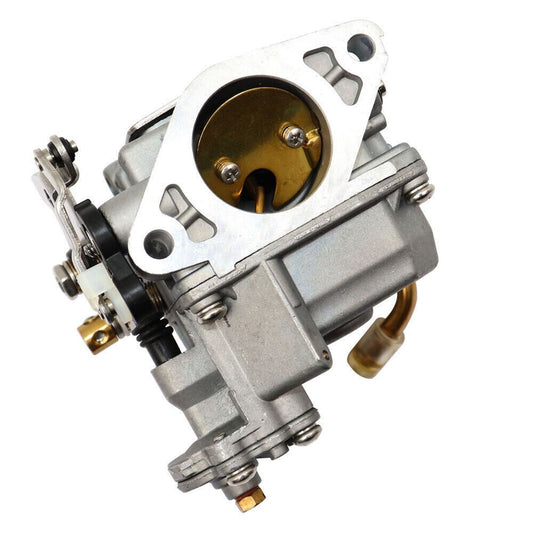
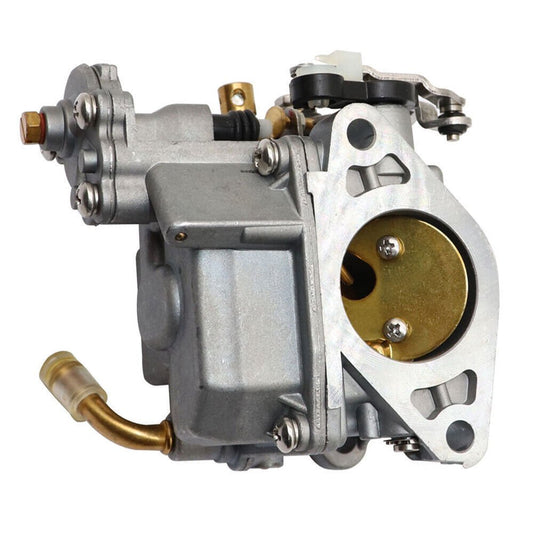
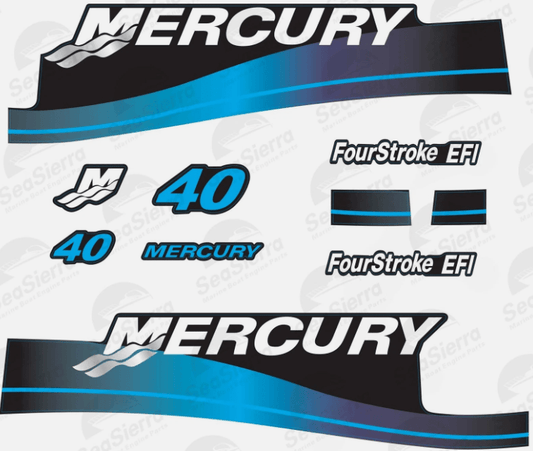
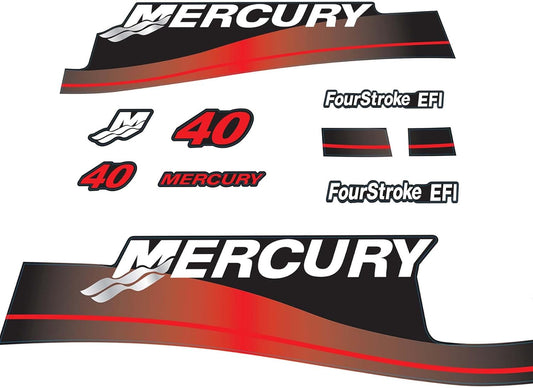
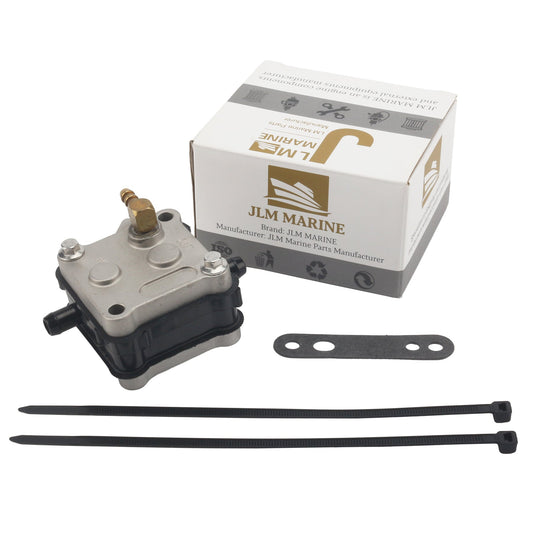
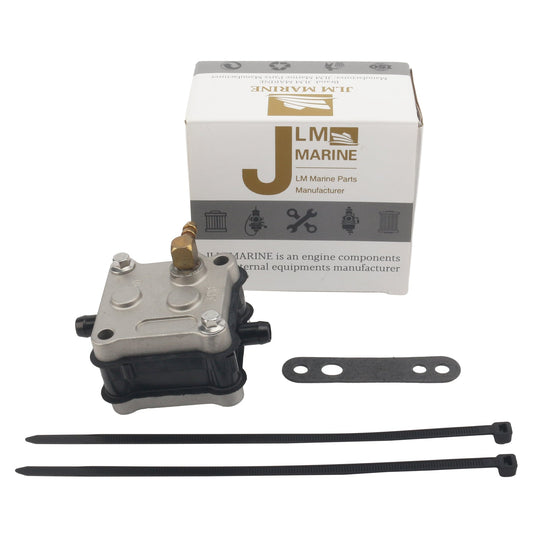
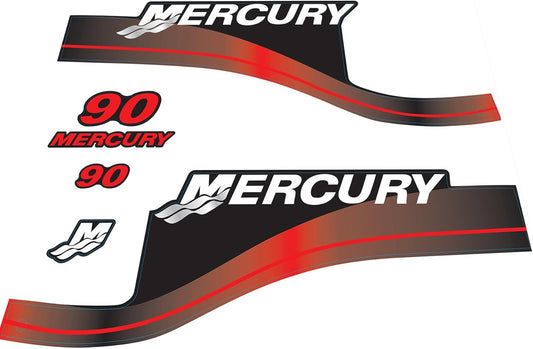
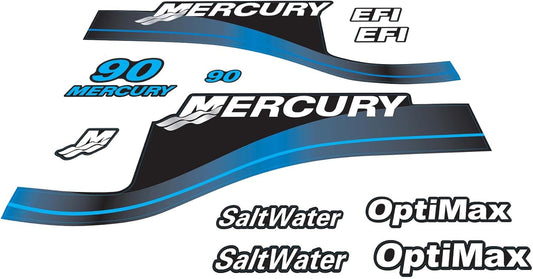
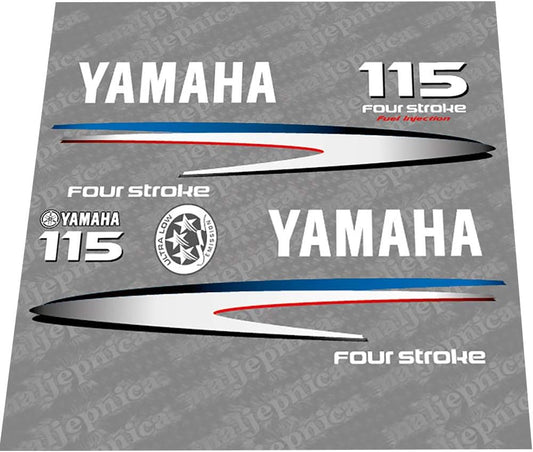

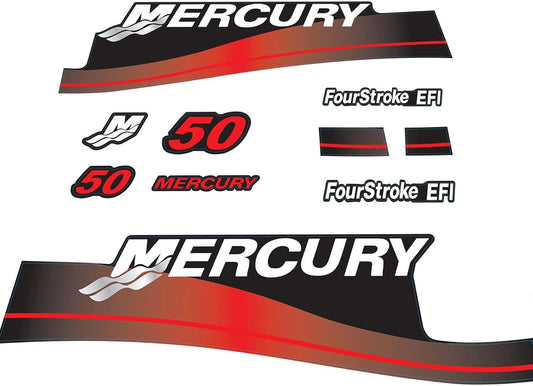
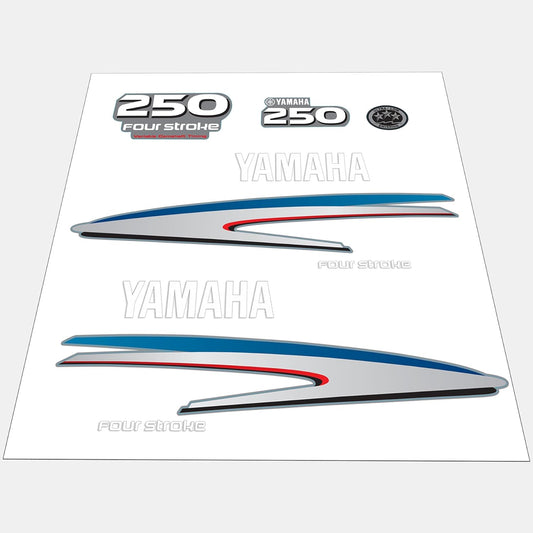
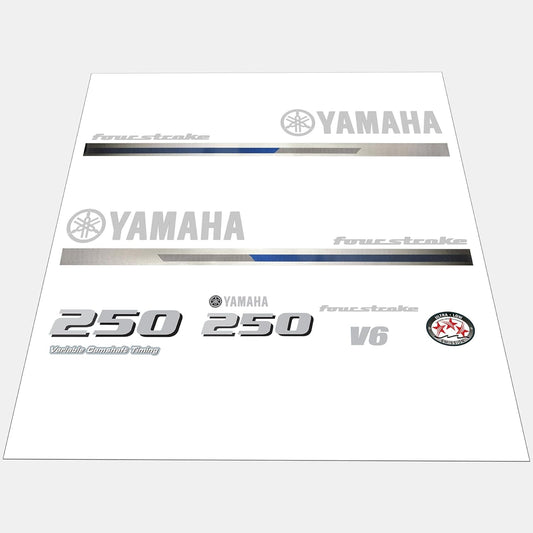


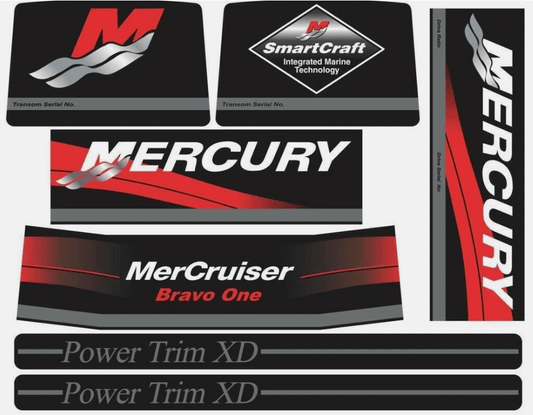
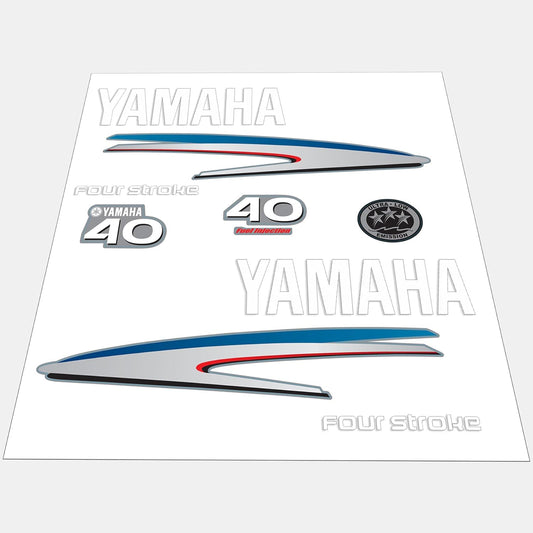
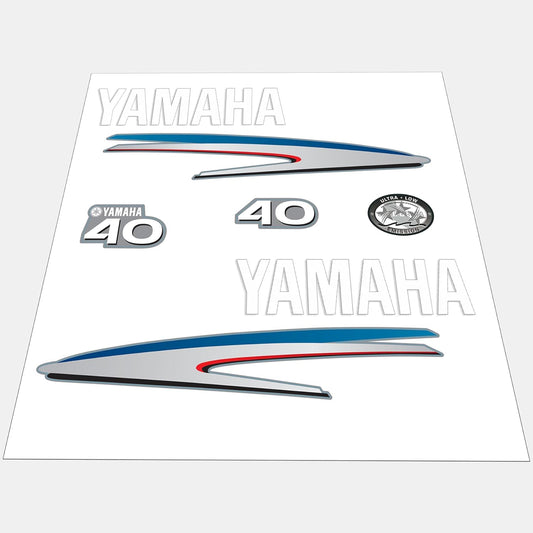
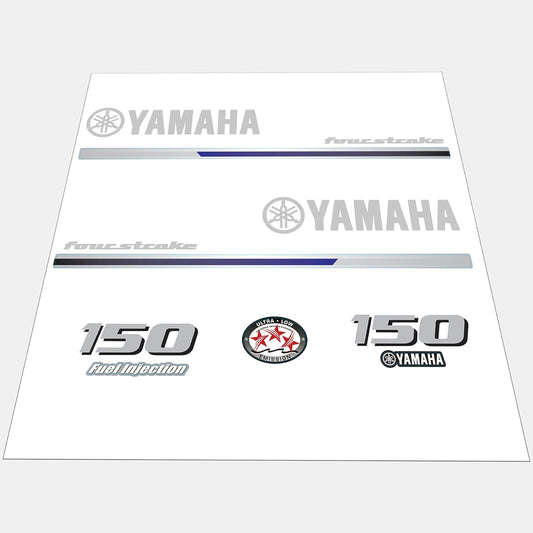
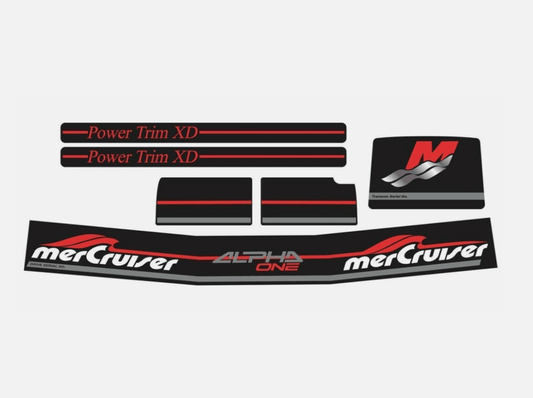

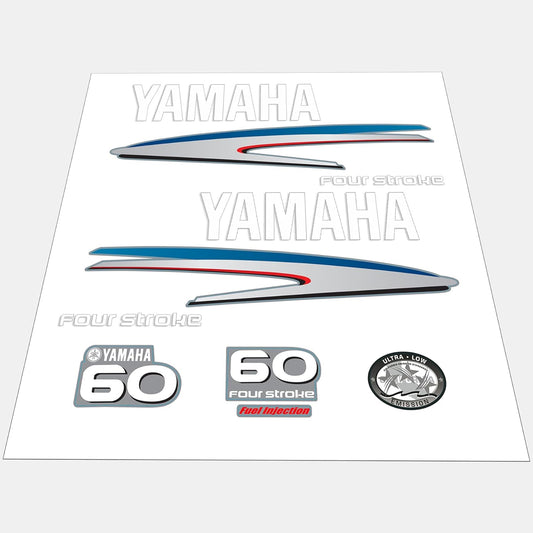
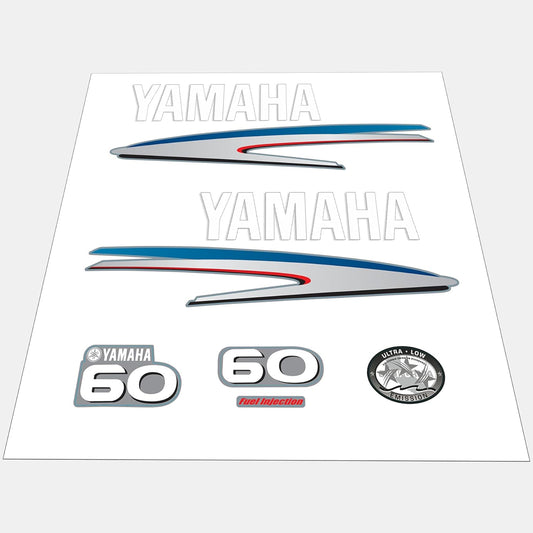
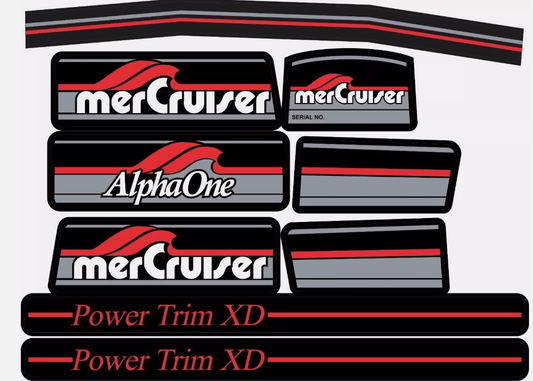
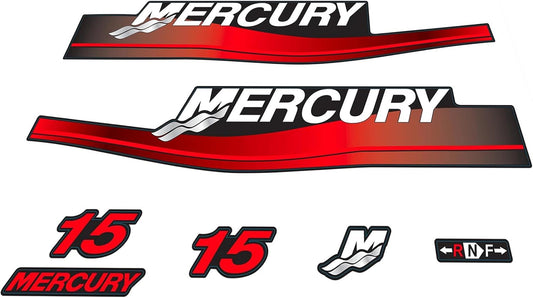

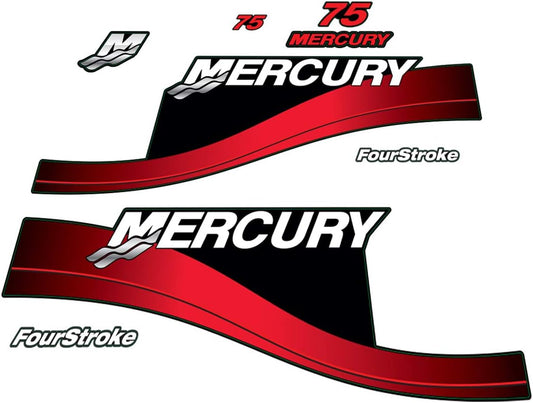
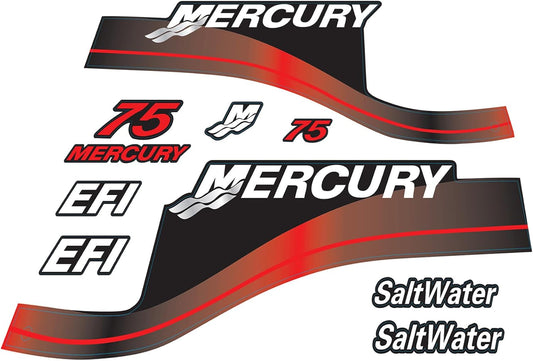
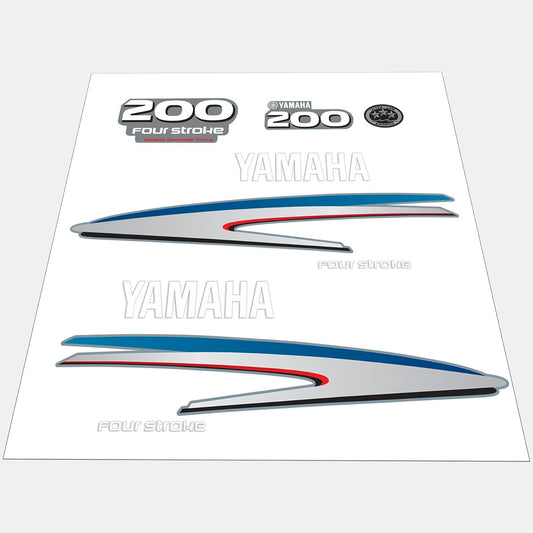
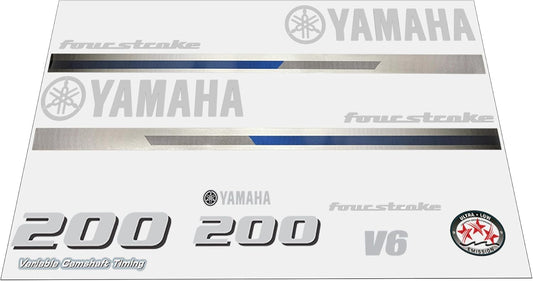
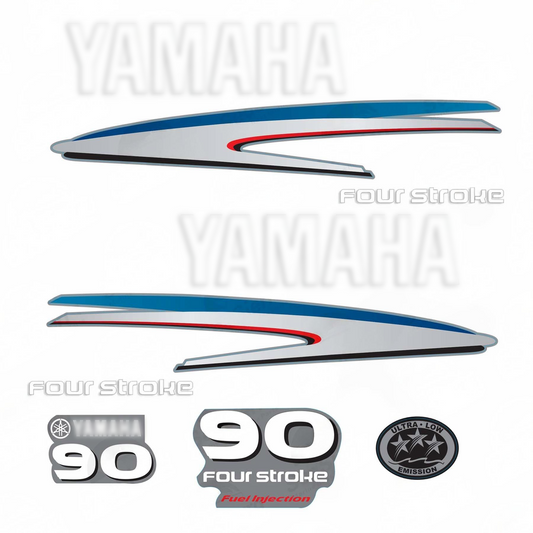
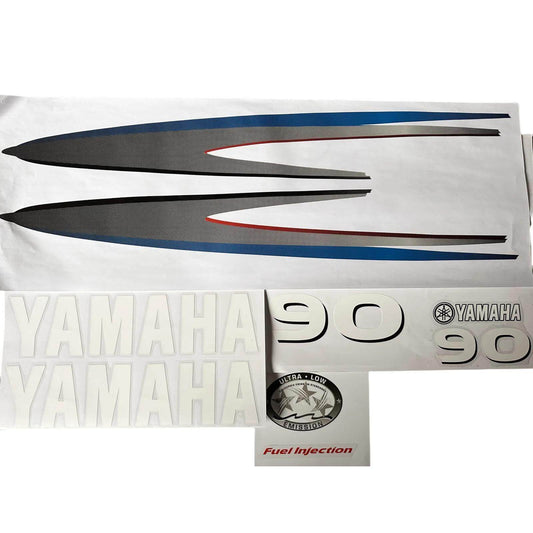
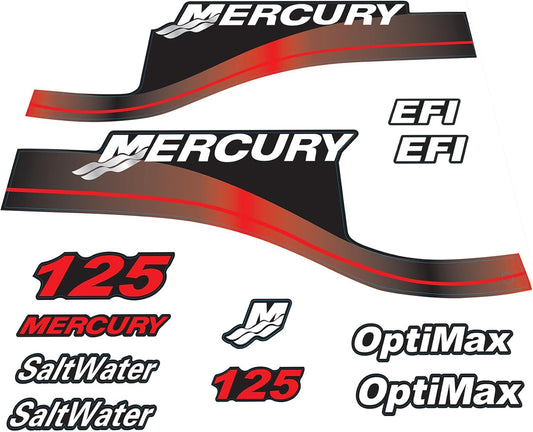


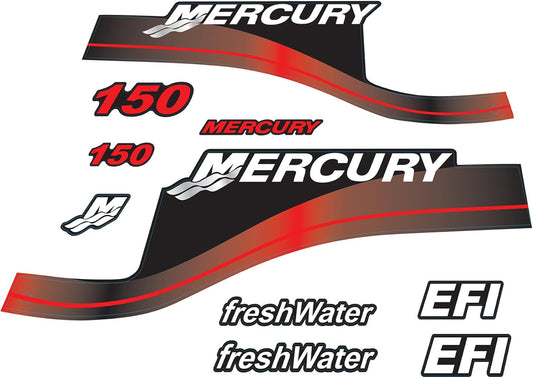
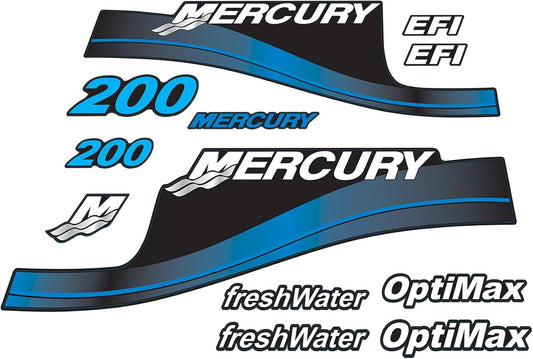

Leave a comment
Please note, comments need to be approved before they are published.